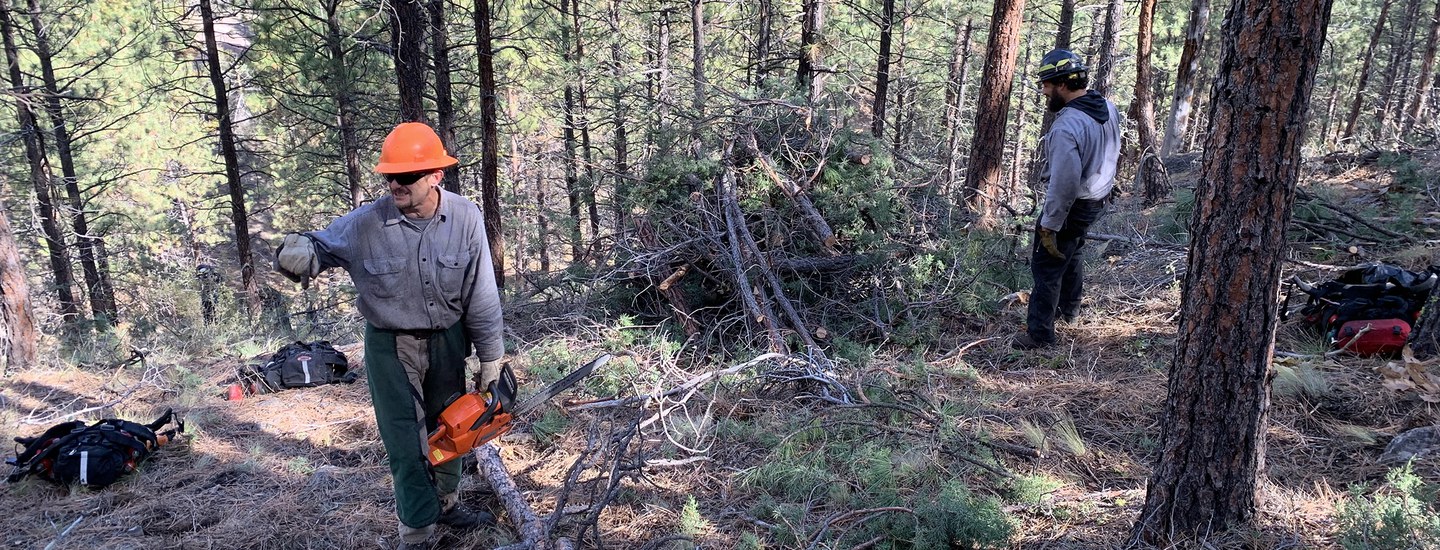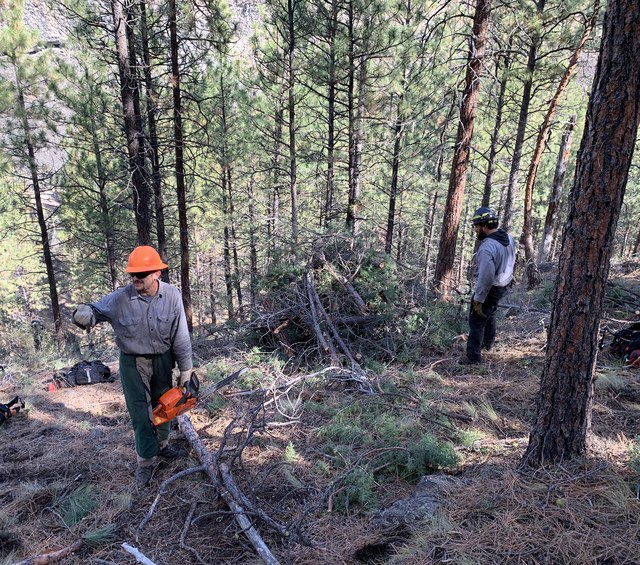The Land Trust’s forest restoration efforts at Whychus Canyon Preserve have been focused on restoring the forested areas of the Preserve to a healthy, open ponderosa pine/juniper savanna that provides high quality wildlife habitat, helps protect adjacent neighborhoods from catastrophic fire, and helps our forests adapt to climate change.
Why do our forests need restoration? Historically, juniper woodlands, like we have at Whychus Canyon Preserve, would have seen regular grassland fires would have thinned many of the junipers spacing them out widely and reducing densities. The Land Trust’s forest restoration efforts are working to restore these historic conditions, improve habitat for wildlife, and help our forests be more resilient as our climate continues to warm.
How does forest restoration help climate change? Forest restoration can help relieve trees from overcrowded, resource-limited conditions, so they’re better able to adjust to and survive various forms of natural disturbance (beetles, fungus, mistletoe, periods of drought, etc) that are becoming increasing more frequent due to climate change. Did you know that healthy forests are also considered one of the best forms of natural carbon storage? Trees, and all plants actually, are magical! They make their own food through a process called photosynthesis that involves taking CO2 out of air to make the energy they need to survive. So, trees and forests help mitigate climate change by actively removing CO2 from the atmosphere!
Land Trust forest restoration activities at Whychus Canyon Preserve include forest thinning, pile burning, and fencing aspen groves:
- 2012 Juniper Thinning: The Land Trust thinned ~100 acres of mixed ponderosa pine/juniper forest to benefit the pine in 2012. These areas were identified as high priority acres because of the density and extent of juniper encroachment and resultant decline in ponderosa pine health. All of the thinning was done by hand due to steep terrain and sensitive soils and vegetation. Thinned materials were then piled and burned. Learn more about pile burning. Since the thinning, the understory response has been dramatic with a proliferation of native wildflowers and healthy bunchgrasses emerging. A diverse native understory that includes a mosaic of shrubs, wildflowers, and bunchgrasses benefits all types of wildlife—from mule deer, to birds, to bees and butterflies.
- 2012 Aspen Restoration: The Land Trust also worked to restore 10 acres of quaking aspen on the southern end of the Preserve that were suffering from browse pressure and juniper encroachment. We used protective cages around the aspen and thinned juniper by hand. Aspen and aspen stands are used by a wide range of wildlife and are considered biological hotspots—places rich in biological diversity. Their dense thickets provide cover and hiding spots for calving deer and elk. Woodpeckers use aspen trunks to create nesting cavities. Songbirds, bats, beaver, black bear, and other wildlife nest and forage in aspen stands. Learn more about aspen.
- 2022 Juniper Thinning: In 2022 the Land Trust removed small diameter juniper from an additional 9 acres in the northwest corner of the Preserve. Our goals were to reduce the threat of wildfire spreading upslope to neighboring homes and improve understory conditions. This south-facing slope is very dry, so reducing the density of juniper helps secure more moisture for other plants to thrive.
Learn more:
- About the Whychus Canyon Preserve.
- About historic conditions in healthy east Cascade pine forests.
- About the Land Trust's Metolius Preserve forest restoration.


